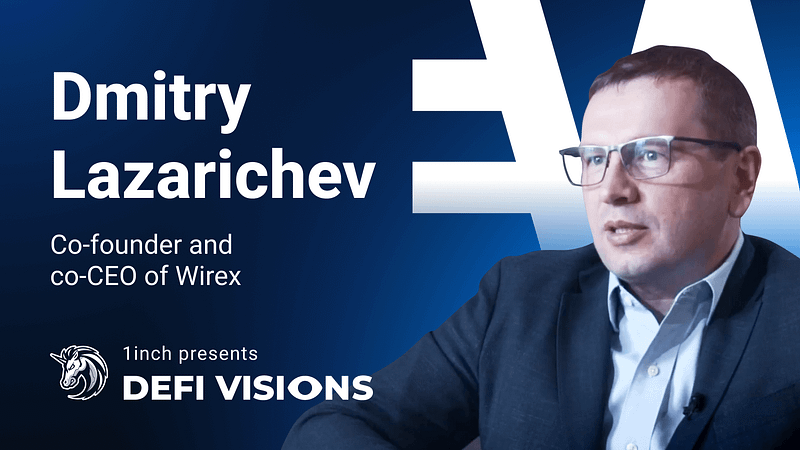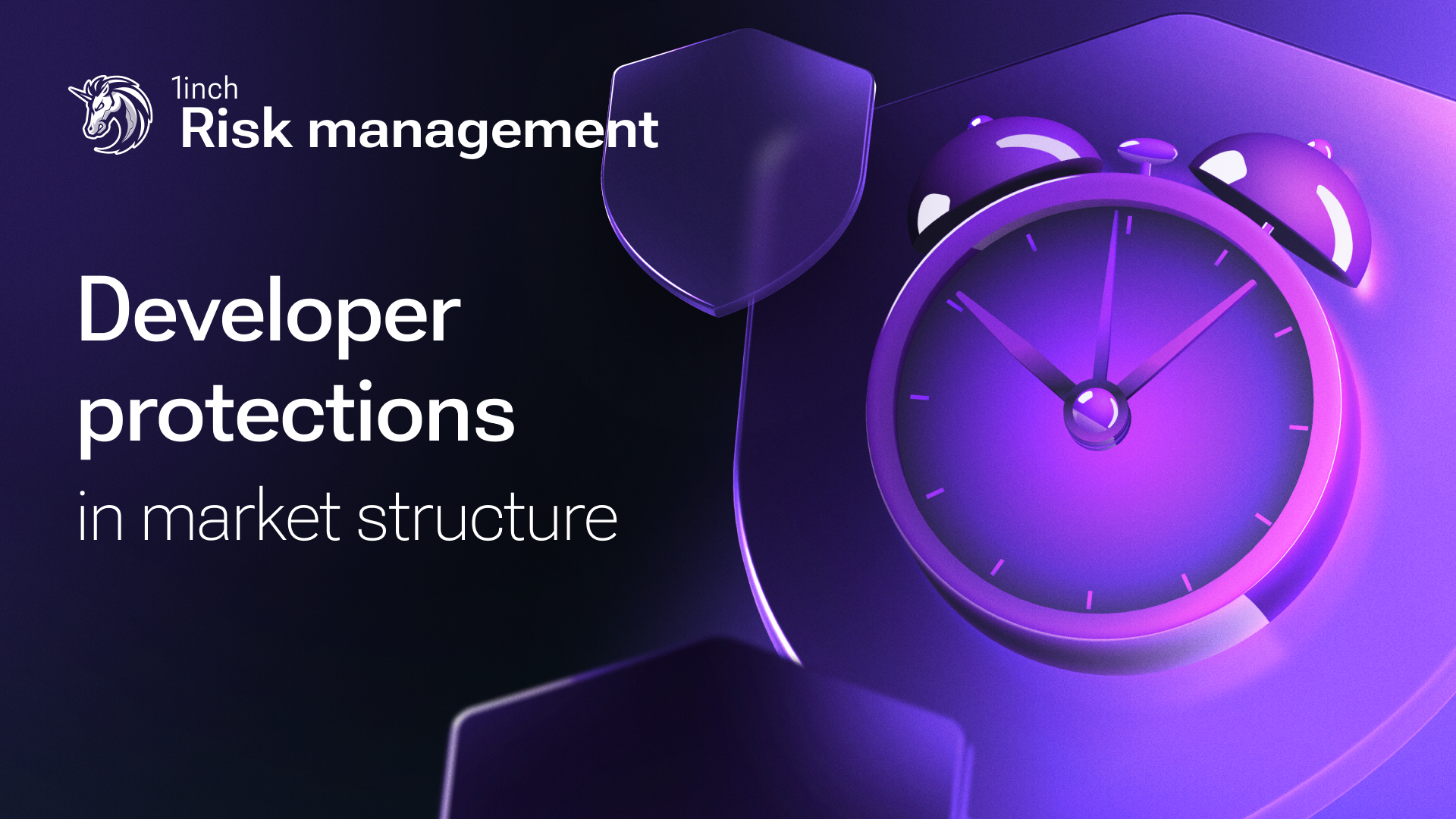DeFi Visions: Dmitry Lazarichev, Wirex

In DeFi Visions, a series of video interviews, the 1inch Network talks to the most prominent people in the DeFi space. This post shares key insights from a recent interview with Dmitry Lazarichev, CEO and co-founder of Wirex.
Dmitry started Wirex in 2014 together with a co-founder Pavel Matveev, focusing on the mission of widening digital ecosystem accessibility. Their payment card, platform and app enable users to keep and move both fiat and digital currencies. The company’s achievements range from launching the first cryptocurrency-enabled card to becoming Mastercard’s first crypto-native member. One of the main goals Dmitry pursues is improving overall user experience, while “bridging the gap between digital assets and fiat, CeFi and DeFi.”
Dmitry believes that launching a seedless non-custodial wallet comes as a significant step towards facilitating mass adoption of payments in crypto. “Basically, it’s a PNC wallet. Customers can restore access using an email address or faceprint,” he says.
“Such a wallet can be used not only as access to DeFi applications but also to Web 3.0 or metaverse,” he explains. “Anyway, a biometric feature can help with an identity situation, which has become a real issue lately, provoking the emergence of such phenomena as airdrop hunters and others.”
Speaking about wider expansion of crypto payments, Dmitry suggests that stablecoins could be a promising solution.
“If you pay with USDC, it has a stable value, it has its collateral behind it, and it’s safe,” he says. “Volatile assets are difficult to use because of the payment ecosystem. You don’t know what the exchange rate will be in a few minutes, and it’s a big problem.”
As a person dedicated to payments evolution, Dmitry emphasizes that blockchain allows for setting a transaction in a few minutes, which is “far cheaper than a centralized payment platform.”
Meanwhile, sharing his thoughts on crypto payments five years from now, Dmitry says, “optimistically, if up to a quarter of all payments are in blockchain, it will be an amazing achievement for the entire industry.”
“Still, adoption is a lot quicker in developing countries,” Dmitry adds. “Some countries are thinking of launching their own CBDC, which is a central bank issue, so they can be among the first ones in the world with such projects.”
In Dmitry’s opinion, despite the recent Terra/Luna disaster, the concept of stablecoins is still viable. “If it’s backed by fiat, it’s probably one of the safest,” he notes. “There are some options, like DAI, for example, which is pretty stable and safe for customers to use. It’s an overcollateralized stablecoin, and it has a liquidation mechanism. If the price of the collateral is going down, those assets can be sold. You can be sure that the value of a stablecoin is $1.”
As for BTC, Dmitry sees its future as a store of value rather than a payment method. “They basically use BTC and ETH as collateral in order to make a loan,” he offers. “Many people say it’s like digital gold, and I tend to agree with this. It is not the easiest way for payments because of its volatility. The price always goes in cycles.”
Comparing the four-year-ago period to the present day, Dmitry says that significant steps have been made towards mass adoption of crypto, especially when it comes to crypto wallets, and prospects look good.
“With the ease of use and improved interface, we should be there in maybe the next five years or so,” he concludes.
Watch the full interview with Dmitry Lazarichev on the 1inch Network’s YouTube channel.




























